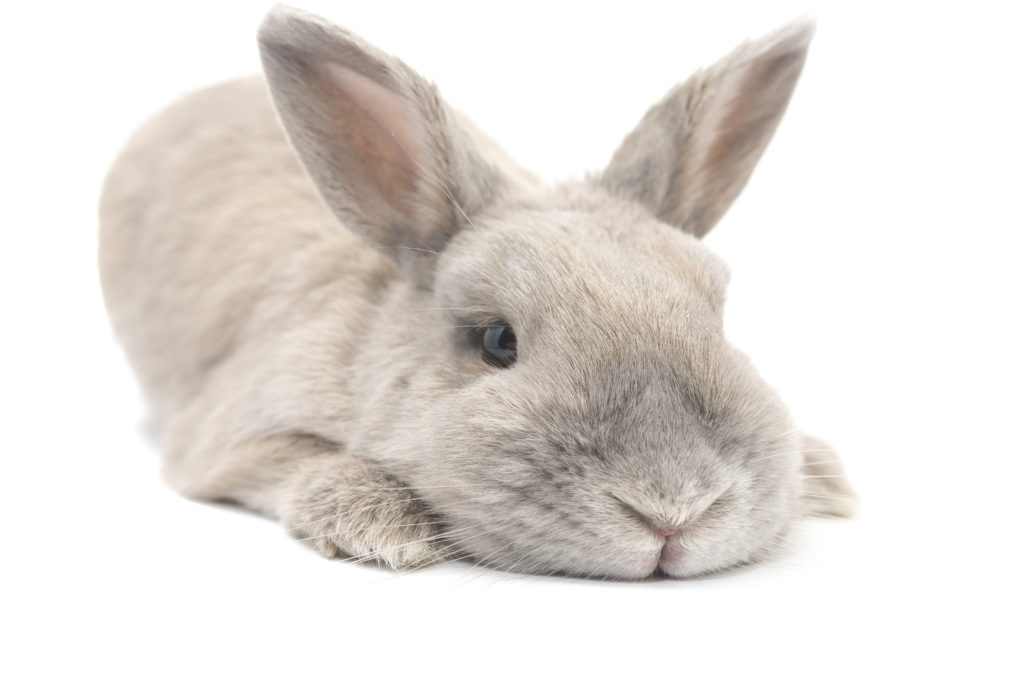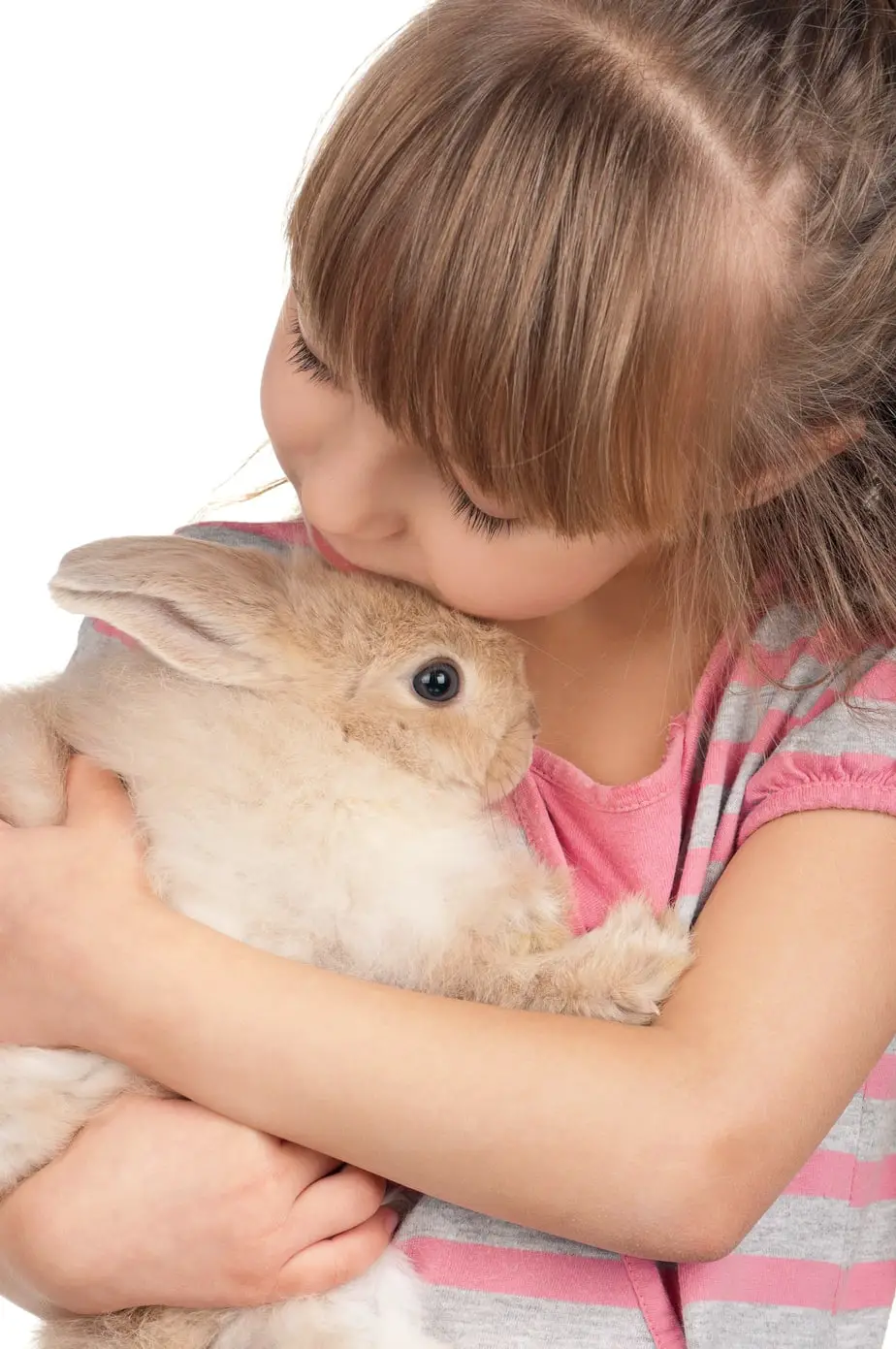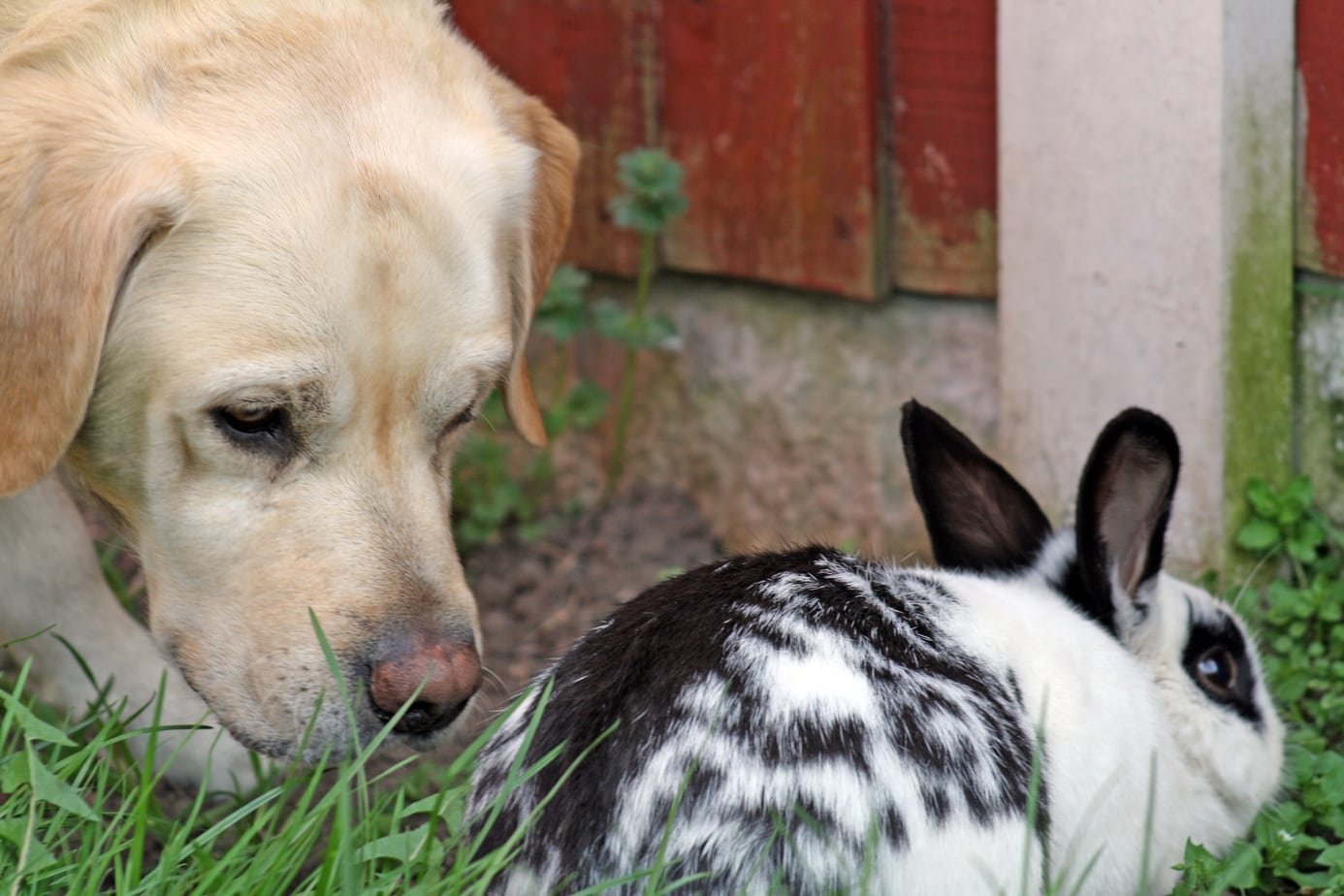
Rabbits are sensitive creatures and can get scared easily. Shock in rabbits should be immediately treated.
Here are 2 steps you can use to calm down your rabbit: warm them up and talk gently to them. Shock can be fatal in some cases. Please get your rabbit to a vet as soon as possible to properly treat the shock and determine whether they have something more severe than shock.
Let’s learn more about shock in rabbits and how to treat it.
What Is Shock in Rabbits?
Shock in rabbits can happen when they become so scared in a situation that their body will shut down. Their temperature will drop, their organs will stop working, and their heart will stop pumping blood. The rabbit will become completely unresponsive to the world around them.
Most rabbits are able to recover from shock. In some rare cases, it can be fatal if not given the proper care and treatment.
An additionally rare response to being suddenly scared is a heart attack. This is not a common occurrence, though it is more likely to happen in younger rabbits. Although a heart attack is not technically considered going into shock, the rabbit most likely died of fright.

What Can Cause Shock in Rabbits?
Because rabbits are incredibly sensitive, many things can cause your rabbit to go into shock. Anything new or stressful may cause your rabbit to go into shock.
Such things include other animals in the house, barking of a dog (whether inside the house or outside), small children handling your rabbit, loud, sudden noises, bright flashes of light, or sometimes other rabbits. Also, be careful when treating your rabbit for fleas. Certain remedies are more harmful than helpful and have the potential to send them into shock. See my article Can a Rabbit Wear a Flea Collar? to be sure you are doing the right thing. Anything that is surprising and out of your rabbit’s daily routine can cause your rabbit to go into shock.
Other causes of shock may include bug infestations or severe medical concerns. If your rabbit is suffering from an additional ailment, this may be causing them to go into shock.
However, shock is not as common as it sounds. Most often, if your rabbit gets scared, they will run and hide from the thing that scared them until they feel it is safe to come out again. Shock can happen and you should know what it looks like, but do not be overly concerned that every doorbell or loud thump will cause your little friend to keel over.
Symptoms of Shock
Though shock may not happen often, it is extremely important that you know what it looks like in your rabbit. Once you know what shock looks like, you can readily watch for it and treat it when it happens.
Symptoms:
- Weak or limp rabbit. This can be when your rabbit is unresponsive to your touch or feels limp when you hold them.
- Rapid breathing or struggle to breathe. Part of shock in rabbits is their organs shut down. Rapid breathing can be a sign of that.
- Hypothermia. As your rabbit’s organs shut down, their temperature will drop. When we talk about treating shock, we’ll talk about how to take your rabbit’s temperature.
- Pale gums. Check your rabbit’s gums. If they are not a healthy pink, then that means there is not enough blood flow throughout the body.
- Cold ears. Feel your rabbit’s ears and if they are cold, that could be a sign of shock.
- Weak pulse. To check your rabbit’s pulse, place your thumb and forefinger around the large vein in one of your rabbit’s ears. If the pulse is inconsistent or weak, they may be in shock.
- Glossed-over eyes. This is when your rabbit does not appear to be focusing on anything and has a dull look.
If you are unsure if your rabbit is in shock or if its condition is worse than the symptoms listed, please contact a local veterinarian for help.
How to Treat Shock in 2 Steps

Although we will give you 2 steps to treat shock in your rabbit, the most vital thing you can do for your rabbit is getting them to a veterinarian as soon as possible. But be careful, as the drive to the vet may cause more stress in your rabbit and prove fatal. You may need to stabilize your rabbit’s condition before heading to the clinic.
Call your vet first to see if you should go into the clinic right away or try to stabilize your rabbit’s condition before heading in.
Step 1
Warm your rabbit. There are several ways you can do this. If one way does not work, try another one.
- Warm towel. Heat up a towel in the dryer so that it is warm, but not hot. Surround your rabbit with the warm towel, but DO NOT cover them. Being completely covered may be stressful for them.
- Warm water bottle. Heat up a water bottle or two in the microwave so that it is warm, but not hot to touch. Place the warm bottle next to your rabbit. DO NOT submerge them in warm water. That could be fatal. Remember, you want to calm your rabbit, not stress them out.
- Heating pad. Place a heating pad on a low setting next to your rabbit. DO NOT put them on top of the pad as that may hurt their sensitive skin.
Keeping your rabbit’s temperature stable is very important. You do not want to cool your rabbit or overheat them. A rabbit’s temperature should be 101–103°F (38.3–39.4°C). If their temperature is 100°F or lower, they will probably be going into shock.
If you can, it would be good to check your rabbit’s temperature. Knowing what temperature they are will be extremely helpful for your vet to know when you go to the clinic. Below is an instructional video on how to take your rabbit’s temperature if you do not know how to. You will need a thermometer and vaseline.
Sometimes rabbits can hide when they are going into shock. Be watchful during stressful situations that your rabbit’s temperature is not sinking below 101°F.
Step 2
Talk soothingly to your rabbit. The main idea for treating shock is to calm your rabbit. Holding your rabbit while they warm up and talking gently to them can help greatly.
Consider taking your rabbit into a dimly lit room, remove any and all distractions or possibilities of loud noises. Talk softly to your rabbit and do anything you would normally do to calm your rabbit.
If you are not the rabbit’s owner and you are just rabbit-sitting, please contact the rabbit’s owner to have them calm down their rabbit. This step will be more effective with someone that the rabbit is more familiar with. However, if the rabbit’s owner cannot be present, contact them for ideas on how best to calm their rabbit and do the best you can to make the rabbit feel comfortable.
Signs of Recovery
The best sign that your rabbit is improving is them returning to its normal behavior. They may begin to eat and drink, hop around, or move to a more comfortable spot. If you are holding your rabbit, they may struggle to be put down. A sure sign that they are recovering is an increase in their energy levels and their stable temperature.
In the days following their shock, continue to check your rabbit’s temperature to ensure that they are staying within 101–103°F (38.3–39.4°C). If their temperature begins to drop again, contact your veterinarian and begin to treat your rabbit in the way that they direct.
Also, be aware that your rabbit may be a little more skittish than normal in the days after their shocking ordeal. Having shock can be scary and your rabbit may be more conscious of its surroundings.

How to Prevent Shock
Now that you know what to look for and how to treat shock, let’s talk about how you can prevent shock in your rabbit. Taking action now to prevent shock will help avoid emergencies in the future.
There are certain things you can do to prevent shock. One of them is to hold your rabbit propperly and, if there are children in the house, teach them how to propperly hold it as well. Check out my article Can You Carry Your Rabbit Like a Baby? to learn more on the best methods of holding your rabbit.
- Introduce your rabbit to other pets slowly. Having other pets in the house, especially cats or dogs that are natural predators, can be incredibly stressful for your rabbit. Limit their interaction with other pets and introduce them a little bit at a time until they are more comfortable around them.
- Help your rabbit become more confident. Some rabbits have anxiety (it’s true!) and may need your help to be more comfortable with their environment or with you, their owner. To help ease their anxiety, stick to a daily routine, spend time with your rabbit, but let them come to you, and give your rabbit places to hide while encouraging them to explore.
- Keep your rabbit inside. This will limit their chances of getting any bug infestations and be in any unfamiliar, scary situations.
- DO NOT get your rabbit wet. Rabbits do not need baths and sudden contact with water or submersion can cause your rabbit to go into shock. Additionally, getting your rabbit wet may cause hypothermia because their fur does not dry easily or quickly. Hypothermia should be avoided.
- Take your rabbit to the vet often. A trip to the veterinarian can be a new and scary situation for your rabbit. Regularly taking them to the clinic will help avoid any shock from that new situation.
